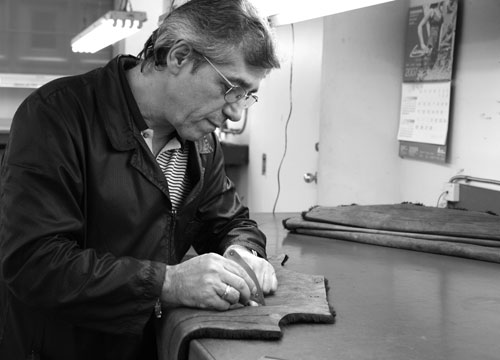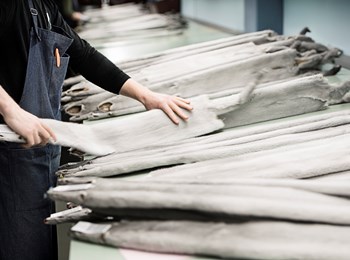Long History

Kastoria and Siatista are the only areas left not only in Greece but also worldwide that continue to process fur and leather! In fact, the economy of these areas depends on the fur industry!
The processing of fur in Kastoria is estimated to have begun around the 14th century. From the 16th century onwards, however, its true spread begins when the Kastorians fur traders begin importing raw material from abroad, initially processing it by hand, making fur, and simultaneously distributing it throughout Europe.
Craftsmanship
 Long history produced great technical skills and knowledge.
Long history produced great technical skills and knowledge.
The fur industry in Kastoria has a tradition of about 500 years, but it is very likely that the Kastorians have been processing fur skins since ancient times, as the morphology of the area was rich in wildlife and an abundance of game. Of course, historical evidence shows that the current know-how of fur processing was developed by Kastorians. They worked in Constantinople and transported it to Kastoria because of the lake and abundant water and their tannery.
Although the industry is evolving increasingly, using all modern forms of processing. The secrets of the art of fur are inherited from generation to generation in keeping with tradition. Production thus retains its distinctiveness by making it unique in the international market, making every fur coat a work of high quality and great technique.
Raw Material

Fur farms dominate the trade, and production has more than doubled since the 1990s, to about a hundred million skins last year, mostly mink and some fox. Trappers typically add millions of wild beaver, coyote, raccoon, muskrat, and other skins. That’s besides untold millions of cattle, lambs, rabbits, ostriches, crocodiles, alligators, and caimans harvested for food as well as skins.
Today, 90 percent of the fur clothing industry’s pelts come from animals raised on farms. The rest is from caught animals in the wild. The most farmed fur-bearing animal is the mink (50 million annually), followed by the fox (about 4 million annually). Asiatic and Finnish raccoons and chinchillas are also farmed for their fur. 64 percent of fur farms are in Northern Europe. 11 percent are in North America. The rest are dispersed throughout the world, in countries such as Argentina and Russia.
Mink have been farmed for fur in the United States for 130 years. In 2010, the U.S. ranked fifth in production behind Denmark, China, the Netherlands, and Poland. Mink typically breed in March and give birth to their litters in May. Farmers vaccinate the young kits for botulism, distemper, enteritis, and, if needed, pneumonia. Methods for euthanizing animals on fur farms, as on all farms, are detailed in the American Veterinary Medical Association’s Report on Euthanasia which is used as a guideline for state departments of agriculture that have jurisdiction over all farms raising domesticated livestock, including mink.
All the Kastoria and Siatista fur fabrics buy their fur raw material from fur auctions in the EU, USA, and Russia, or uses fur pelts that buy direct from Greek fur farms
Sustainability
 Human hands have worked with natural fur since the dawn of mankind. The European furriers of today remain dedicated to skillful craftsmanship handed over from master to apprentice, or from one generation to the next within the family. This dedication to human skills and quality makes the furrier craftsmanship a role model for sustainability. Natural fur garments have inherent sustainability qualities because consumers value products of excellent craftsmanship
Human hands have worked with natural fur since the dawn of mankind. The European furriers of today remain dedicated to skillful craftsmanship handed over from master to apprentice, or from one generation to the next within the family. This dedication to human skills and quality makes the furrier craftsmanship a role model for sustainability. Natural fur garments have inherent sustainability qualities because consumers value products of excellent craftsmanship
Sustainable fur is a completely natural fashion material and is a renewable resource with exceptional thermal qualities. Fur is biodegradable and has much less impact on landfills and oceans than plastic-based synthetic textiles. The global textile market is dominated by synthetic textiles such as polyester. Not only does the production of these textiles release a significant amount of greenhouse gasses, but the pollution associated with its end-of-life disposal has also become a major environmental threat.





